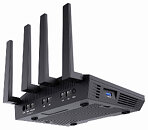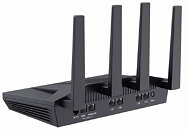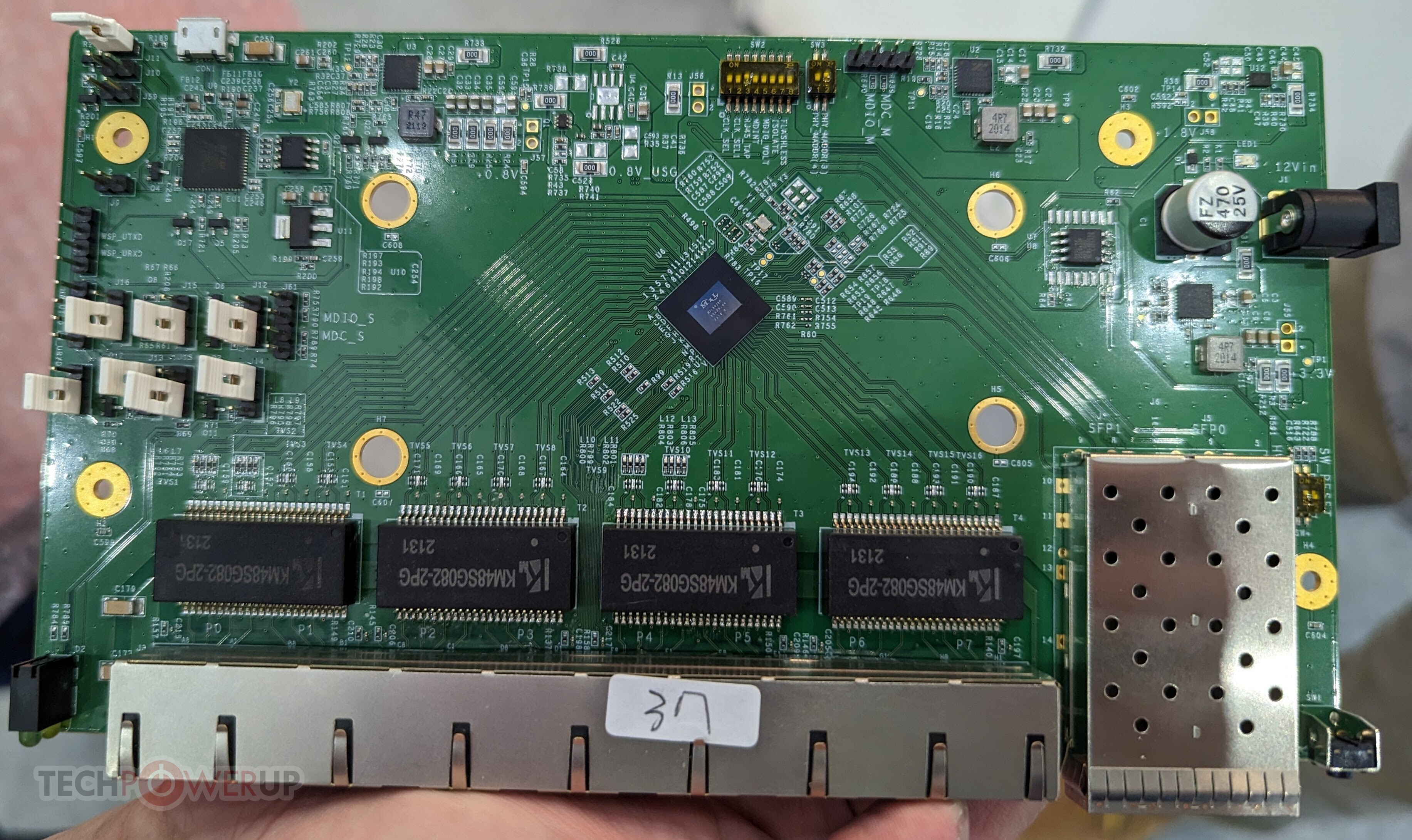TheLostSwede
News Editor
- Joined
- Nov 11, 2004
- Messages
- 18,472 (2.47/day)
- Location
- Sweden
| System Name | Overlord Mk MLI |
|---|---|
| Processor | AMD Ryzen 7 7800X3D |
| Motherboard | Gigabyte X670E Aorus Master |
| Cooling | Noctua NH-D15 SE with offsets |
| Memory | 32GB Team T-Create Expert DDR5 6000 MHz @ CL30-34-34-68 |
| Video Card(s) | Gainward GeForce RTX 4080 Phantom GS |
| Storage | 1TB Solidigm P44 Pro, 2 TB Corsair MP600 Pro, 2TB Kingston KC3000 |
| Display(s) | Acer XV272K LVbmiipruzx 4K@160Hz |
| Case | Fractal Design Torrent Compact |
| Audio Device(s) | Corsair Virtuoso SE |
| Power Supply | be quiet! Pure Power 12 M 850 W |
| Mouse | Logitech G502 Lightspeed |
| Keyboard | Corsair K70 Max |
| Software | Windows 10 Pro |
| Benchmark Scores | https://valid.x86.fr/yfsd9w |
GL.iNet unveiled its latest Wi-Fi 6 AX6000 home router, Flint 2 (GL-MT6000). Designed to fulfill scenarios such as heavy data transfers, hyper hundreds of device connections, and ultra-low latency gaming environments, this device is a modern home and office router capable of
high-performance demanding connectivity.
The Flint 2 is ideal for users with high speed, capacity, and stability requirements. With dual band AX6000, up to 160 MHz bandwidth, 4x4 MU-MIMO support, and eight high-power FEMs. Not only does the Flint 2 extend Wi-Fi coverage to meet the Wi-Fi 6 high-speed, along with the dual 2.5G ports, also allows this device to access 2.5G high-speed broadband with 2.5G intranet transmission capability easily.




Superior Network Performance
The Flint 2 is a Wi-Fi 6 home and office router that offers AX6000 speeds, delivering network speeds of up to 1,148 Mbps on the 2.4 GHz band and 4,804 Mbps on the 5 GHz band. It also supports advanced network redundancy features, including the multi-WAN features such as load balancing, and failover, in order to enhance network continuity, optimize detection accuracy, and failover switching efficiency.
VPN Client and Server
Being a high-performance VPN router, the Flint 2 can run VPN clients and host VPN servers. It supports both WireGuard and OpenVPN runs up to 900 Mbps and 190 Mbps, respectively. While automatically encrypting all network traffic within the network, this router allows users to realize services such as remote website access from any location free from geographical restrictions.
Device Customization
The Flint 2 comes with an operating system based on OpenWrt (v23.05 kernel version 5.15) proprietary firmware, providing users with more than 5,000 off-the-shelf customization plug-ins to simplify the process of setting up a personalized router. For DIY enthusiasts, its user-friendly interface facilitates non-technical users to customize easily their own devices by installing plug-ins and applications while allowing advanced users to install and manage the corresponding software packages.
Device Enhancement
To fulfill users' need to DIY more firmware and connect for a large scale of devices, the Flint 2 is built to have large storage - 1 GB of RAM, 8 GB eMMC storage as standard, and a powerful CPU. The Quad-Core 2 GHz Processor and eight high-power FEMs also equip this router with more powerful CPU processing power, which outperforms this router in reliability and overall efficiency.
Parental Control
Flint 2 integrates with Bark, the company with the largest coverage of any monitoring tool, to support parental control features on the device. Bark helps families manage and secure their children's online lives. Along with this function, Flint 2 could help parents achieve more effective and comprehensive protection of their children's online safety through services such as screen time management and filtering of specific categories of websites.
View at TechPowerUp Main Site | Source
high-performance demanding connectivity.
The Flint 2 is ideal for users with high speed, capacity, and stability requirements. With dual band AX6000, up to 160 MHz bandwidth, 4x4 MU-MIMO support, and eight high-power FEMs. Not only does the Flint 2 extend Wi-Fi coverage to meet the Wi-Fi 6 high-speed, along with the dual 2.5G ports, also allows this device to access 2.5G high-speed broadband with 2.5G intranet transmission capability easily.




Superior Network Performance
The Flint 2 is a Wi-Fi 6 home and office router that offers AX6000 speeds, delivering network speeds of up to 1,148 Mbps on the 2.4 GHz band and 4,804 Mbps on the 5 GHz band. It also supports advanced network redundancy features, including the multi-WAN features such as load balancing, and failover, in order to enhance network continuity, optimize detection accuracy, and failover switching efficiency.
VPN Client and Server
Being a high-performance VPN router, the Flint 2 can run VPN clients and host VPN servers. It supports both WireGuard and OpenVPN runs up to 900 Mbps and 190 Mbps, respectively. While automatically encrypting all network traffic within the network, this router allows users to realize services such as remote website access from any location free from geographical restrictions.
Device Customization
The Flint 2 comes with an operating system based on OpenWrt (v23.05 kernel version 5.15) proprietary firmware, providing users with more than 5,000 off-the-shelf customization plug-ins to simplify the process of setting up a personalized router. For DIY enthusiasts, its user-friendly interface facilitates non-technical users to customize easily their own devices by installing plug-ins and applications while allowing advanced users to install and manage the corresponding software packages.
Device Enhancement
To fulfill users' need to DIY more firmware and connect for a large scale of devices, the Flint 2 is built to have large storage - 1 GB of RAM, 8 GB eMMC storage as standard, and a powerful CPU. The Quad-Core 2 GHz Processor and eight high-power FEMs also equip this router with more powerful CPU processing power, which outperforms this router in reliability and overall efficiency.
Parental Control
Flint 2 integrates with Bark, the company with the largest coverage of any monitoring tool, to support parental control features on the device. Bark helps families manage and secure their children's online lives. Along with this function, Flint 2 could help parents achieve more effective and comprehensive protection of their children's online safety through services such as screen time management and filtering of specific categories of websites.
View at TechPowerUp Main Site | Source







 .
.